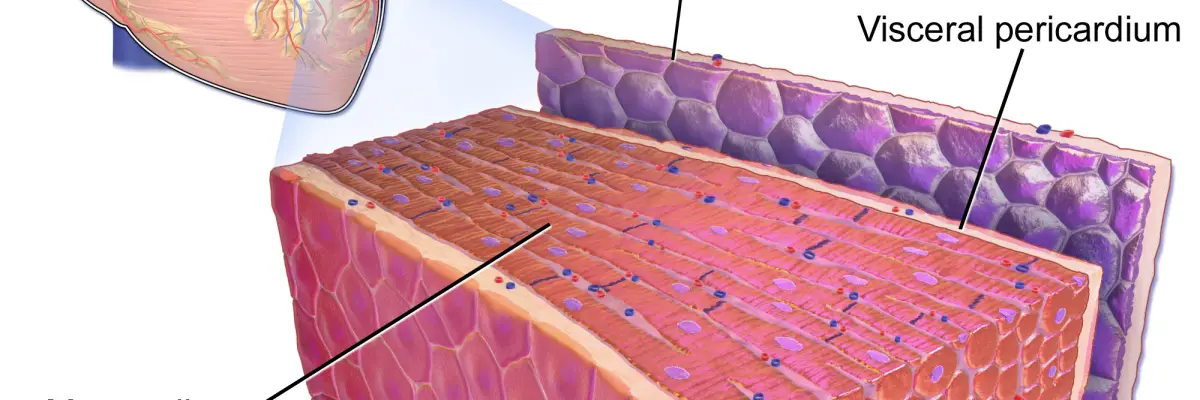Medical abbreviations play a crucial role in the healthcare field by simplifying communication, improving efficiency, and ensuring patient safety. Accurate and standardized use of medical abbreviations is essential in medical record notes, as misinterpretation can lead to serious consequences. In this essay, we will present a comprehensive list of the top 70 medical abbreviations commonly used in medical record notes and a sample history and physical exam medical record note using the abbreviations, followed by a table for easy reference and multiple choice practice questions with answer explanations.
Top 70 Medical Abbreviations:
- AAOx3 – Awake, alert, and oriented to person, place, and time
- ABG – Arterial blood gas
- AC – Before meals
- ADL – Activities of daily living
- AED – Automated external defibrillator
- A&O – Alert and oriented
- ASA – Aspirin
- BID – Twice daily
- BMI – Body mass index
- BP – Blood pressure
- BPM – Beats per minute
- BSA – Body surface area
- CBC – Complete blood count
- CCU – Coronary care unit
- CHF – Congestive heart failure
- COPD – Chronic obstructive pulmonary disease
- CPR – Cardiopulmonary resuscitation
- CSF – Cerebrospinal fluid
- CVA – Cerebrovascular accident (stroke)
- CXR – Chest X-ray
- DNR – Do not resuscitate
- DTs – Delirium tremens
- ECG/EKG – Electrocardiogram
- ED – Emergency department
- ETOH – Ethanol (alcohol)
- FHR – Fetal heart rate
- GI – Gastrointestinal
- GTT – Glucose tolerance test
- H&P – History and physical examination
- HCT – Hematocrit
- HIV – Human immunodeficiency virus
- HR – Heart rate
- ICU – Intensive care unit
- I&D – Incision and drainage
- IV – Intravenous
- IVP – Intravenous pyelogram
- JVD – Jugular venous distension
- KVO – Keep vein open
- L&D – Labor and delivery
- LFT – Liver function tests
- MI – Myocardial infarction
- NPO – Nothing by mouth (nil per os)
- NSAID – Non-steroidal anti-inflammatory drug
- O2 – Oxygen
- OR – Operating room
- OT – Occupational therapy
- PCA – Patient-controlled analgesia
- PERRLA – Pupils equal, round, and reactive to light and accommodation
- PMH – Past medical history
- PRN – As needed (pro re nata)
- PT – Physical therapy
- PT/INR – Prothrombin time/international normalized ratio
- PTT – Partial thromboplastin time
- ROM – Range of motion
- RR – Respiratory rate
- Rx – Prescription
- S/P – Status post
- SOB – Shortness of breath
- STAT – Immediately (from Latin “statim”)
- TB – Tuberculosis
- TIA – Transient ischemic attack
- TID – Three times daily (ter in die)
- TKO – To keep open
- Tx – Treatment
- URI – Upper respiratory infection
- UTI – Urinary tract infection
- V/S – Vital signs
- WBC – White blood cell count
- WNL – Within normal limits
- YOB – Year of birth
Sample Fictional History and Physical Exam Medical Record Note
Patient Information:
- Name: John Doe
- Age: 45
- Gender: Male
- Date of Admission: 09/03/2023
- Medical Record Number: 123456789
Chief Complaint: The patient presents with chest pain and shortness of breath.
History of Present Illness (HPI): Mr. Doe is a 45-year-old male who arrived at the emergency department (ED) today complaining of acute onset chest pain. The pain is described as a sharp, stabbing sensation in the substernal area and radiates to his left arm. It started approximately 2 hours ago while he was at rest. He rates the pain as 8/10 in intensity. He also reports associated shortness of breath (SOB) and diaphoresis. The patient denies any recent trauma or injury.
Past Medical History (PMH):
- Hypertension (HTN)
- Hyperlipidemia (HLD)
- Gastroesophageal reflux disease (GERD)
- Tobacco use (30 pack-years)
- Family history of coronary artery disease (CAD)
Medications:
- Lisinopril 10 mg daily (for HTN)
- Atorvastatin 20 mg daily (for HLD)
- Omeprazole 20 mg daily (for GERD)
Allergies:
- None known
Social History: The patient has a 30-pack-year history of smoking but quit 5 years ago. He drinks alcohol occasionally. He is married and works as an office manager.
Review of Systems (ROS):
- General: Diaphoresis
- Cardiovascular: Chest pain, palpitations
- Respiratory: Shortness of breath
- Gastrointestinal: No nausea or vomiting
- Neurological: No dizziness or syncope
- Musculoskeletal: No joint pain
- Dermatological: No rashes
Physical Examination:
- General: The patient appears uncomfortable due to pain.
- Vital Signs: Blood pressure (BP) 160/90 mm Hg, heart rate (HR) 100 bpm, respiratory rate (RR) 22 bpm, oxygen saturation (O2) 95% on room air.
- Cardiovascular: Irregular rhythm with an S4 gallop. Jugular venous distension (JVD) not observed.
- Respiratory: Diminished breath sounds at the left lung base.
- Abdominal: Soft and non-tender, no hepatomegaly or splenomegaly.
- Musculoskeletal: No deformities or tenderness.
- Skin: Diaphoretic but no rashes or lesions.
Assessment:
- Acute coronary syndrome (ACS) likely due to the patient’s chest pain, diaphoresis, and ECG findings.
- Hypertension (HTN) with uncontrolled blood pressure.
- Hyperlipidemia (HLD).
- History of tobacco use.
Plan:
- ECG to evaluate for ischemic changes.
- Troponin and other cardiac biomarkers.
- Continuous cardiac monitoring.
- Aspirin 325 mg orally (ASA).
- Nitroglycerin sublingual (0.4 mg every 5 minutes, as needed for chest pain).
- Oxygen therapy to maintain oxygen saturation above 94%.
- Intravenous (IV) access and fluids.
- Consultation with the cardiology team for possible cardiac catheterization.
- Blood pressure control with antihypertensive medication as per cardiology recommendations.
- Smoking cessation counseling.
- Statin therapy optimization.
Follow-Up: The patient will be closely monitored in the coronary care unit (CCU). Further interventions will depend on the results of cardiac evaluations. Family history of CAD and the patient’s history of smoking are significant risk factors for cardiovascular disease.
Physician Signature: Dr. [Your Name], MD 09/03/2023

Below is a table summarizing the top 70 medical abbreviations for quick reference:
| Abbreviation | Meaning |
|---|---|
| AAOx3 | Awake, alert, and oriented x3 |
| ABG | Arterial blood gas |
| AC | Before meals |
| ADL | Activities of daily living |
| AED | Automated external defibrillator |
| A&O | Alert and oriented |
| ASA | Aspirin |
| BID | Twice daily |
| BMI | Body mass index |
| BP | Blood pressure |
| BPM | Beats per minute |
| BSA | Body surface area |
| CBC | Complete blood count |
| CCU | Coronary care unit |
| CHF | Congestive heart failure |
| COPD | Chronic obstructive pulmonary disease |
| CPR | Cardiopulmonary resuscitation |
| CSF | Cerebrospinal fluid |
| CVA | Cerebrovascular accident (stroke) |
| CXR | Chest X-ray |
| DNR | Do not resuscitate |
| DTs | Delirium tremens |
| ECG/EKG | Electrocardiogram |
| ED | Emergency department |
| ETOH | Ethanol (alcohol) |
| FHR | Fetal heart rate |
| GI | Gastrointestinal |
| GTT | Glucose tolerance test |
| H&P | History and physical examination |
| HCT | Hematocrit |
| HIV | Human immunodeficiency virus |
| HR | Heart rate |
| ICU | Intensive care unit |
| I&D | Incision and drainage |
| IV | Intravenous |
| IVP | Intravenous pyelogram |
| JVD | Jugular venous distension |
| KVO | Keep vein open |
| L&D | Labor and delivery |
| LFT | Liver function tests |
| MI | Myocardial infarction |
| NPO | Nothing by mouth (nil per os) |
| NSAID | Non-steroidal anti-inflammatory drug |
| O2 | Oxygen |
| OR | Operating room |
| OT | Occupational therapy |
| PCA | Patient-controlled analgesia |
| PERRLA | Pupils equal, round, and reactive to light and accommodation |
| PMH | Past medical history |
| PRN | As needed (pro re nata) |
| PT | Physical therapy |
| PT/INR | Prothrombin time/international normalized ratio |
| PTT | Partial thromboplastin time |
| ROM | Range of motion |
| RR | Respiratory rate |
| Rx | Prescription |
| S/P | Status post |
| SOB | Shortness of breath |
| STAT | Immediately (statim) |
| TB | Tuberculosis |
| TIA | Transient ischemic attack |
| TID | Three times daily (ter in die) |
| TKO | To keep open |
| Tx | Treatment |
| URI | Upper respiratory infection |
| UTI | Urinary tract infection |
| V/S | Vital signs |
| WBC | White blood cell count |
| WNL | Within normal limits |
| YOB | Year of birth |
Conclusion:
In the world of healthcare, accurate and standardized communication is paramount to patient safety and effective treatment. The top 100 medical abbreviations presented in this essay, along with the accompanying table, serve as valuable tools for healthcare professionals, medical students, and anyone involved in the healthcare industry. Proper understanding and usage of these abbreviations can enhance the efficiency and clarity of medical record notes, ultimately contributing to improved patient care.
Question 1: What does “COPD” stand for in medical terminology? A) Coronary artery disease B) Chronic obstructive pulmonary disease C) Congestive heart failure D) Cerebrovascular accident
Answer: B) Chronic obstructive pulmonary disease Explanation: COPD is an abbreviation for “Chronic Obstructive Pulmonary Disease,” which is a chronic lung condition characterized by airflow obstruction.
Question 2: In medical records, what does “NPO” indicate? A) No pain observed B) No palpitations observed C) Nothing by mouth D) Notifying primary officer
Answer: C) Nothing by mouth Explanation: “NPO” is an abbreviation for “Nil Per Os,” which means that a patient should not have anything by mouth, including food or liquids.
Question 3: What is the abbreviation “ECG/EKG” commonly used for in the medical field? A) Electroconvulsive therapy B) Electronic control gate C) Electrocardiogram D) Endoscopic cholecystectomy
Answer: C) Electrocardiogram Explanation: “ECG” and “EKG” both refer to “Electrocardiogram,” a test used to record the electrical activity of the heart over a period of time.
Question 4: What does “PRN” stand for in a medical context? A) Primary registered nurse B) Patient-related notation C) Per rectal notation D) As needed
Answer: D) As needed Explanation: “PRN” stands for “pro re nata,” which means that a medication or treatment should be administered as needed.
Question 5: In medical terminology, what does “CBC” represent? A) Complete blood count B) Coronary bypass catheter C) Continuous bladder catheterization D) Cardiac blood circulation
Answer: A) Complete blood count Explanation: “CBC” stands for “Complete Blood Count,” a blood test that measures various components of blood, including red and white blood cells.
Question 6: What does “AC” mean when used in medical notes? A) After meals B) Before meals C) Aspirin count D) Antibiotic concentration
Answer: B) Before meals Explanation: “AC” is an abbreviation for “ante cibum,” which means “before meals.”
Question 7: What is the purpose of an “ABG” test in healthcare? A) Allergy blood glucose B) Arterial blood gas analysis C) Advanced blood group testing D) Automated blood glucose monitoring
Answer: B) Arterial blood gas analysis Explanation: “ABG” stands for “Arterial Blood Gas,” a test used to measure the levels of oxygen and carbon dioxide in the blood, as well as blood pH and other parameters.
Question 8: What does “OT” typically refer to in a medical setting? A) Oxygen therapy B) Occupational therapy C) Orthopedic treatment D) Ophthalmic testing
Answer: B) Occupational therapy Explanation: “OT” stands for “Occupational Therapy,” a type of therapy that helps patients regain independence in their daily activities.
Question 9: What does “SOB” commonly indicate in medical records? A) Shortness of breath B) Swelling of the bladder C) Subcutaneous oxygen boost D) Systemic organ blockage
Answer: A) Shortness of breath Explanation: “SOB” is often used to abbreviate “Shortness of Breath,” a symptom that can be indicative of various medical conditions, particularly respiratory or cardiac issues.
Question 10: What is the meaning of “IVP” in the context of medical abbreviations? A) In vitro pregnancy B) Intravenous pyelogram C) Intravascular penetration D) Involuntary pulse variation
Answer: B) Intravenous pyelogram Explanation: “IVP” stands for “Intravenous Pyelogram,” a radiologic test used to visualize the kidneys, bladder, and ureters by injecting a contrast material into a vein.
Check out these popular articles 🙂
Circulatory System: Blood Flow Pathway Through the Heart
Ectoderm vs Endoderm vs Mesoderm
Circulatory System: Heart Structures and Functions
Ductus Arteriosus Vs Ductus Venosus Vs Foramen Ovale: Fetal Heart Circulation
Cardiac Arrhythmias: Definition, Types, Symptoms, and Prevention
Upper Vs Lower Respiratory System: Upper vs Lower Respiratory Tract Infections
Seven General Functions of the Respiratory System
Digestive System Anatomy: Diagram, Organs, Structures, and Functions
Kidney Embryology & Development: Easy Lesson
Psychology 101: Crowd Psychology and The Theory of Gustave Le Bon
Introduction to Evolution: Charles Darwin and Alfred Russel Wallace
Copyright © 2023 Moosmosis Organization: All Rights Reserved
All rights reserved. This essay first published on moosmosis.org or any portion thereof may not be reproduced or used in any manner whatsoever
without the express written permission of the publisher at moosmosis.org.

Please Like and Subscribe to our Email List at moosmosis.org, Facebook, Twitter, Youtube to support our open-access youth education initiatives! 🙂
Categories: anatomy, Biology, cell biology, education, health, medicine, stem, technology













Helpful!
LikeLike
Thanks for deciphering the abbreviations
LikeLiked by 2 people
You’re very welcome! Thank you so much!
LikeLiked by 1 person
💯
LikeLiked by 1 person
Thank you so much! 💕🙏
LikeLiked by 1 person
excellent introduction to medical abbreviations, terminology and record keeping.
LikeLiked by 1 person
Thank you so much Michael!! Have an excellent day!
LikeLike